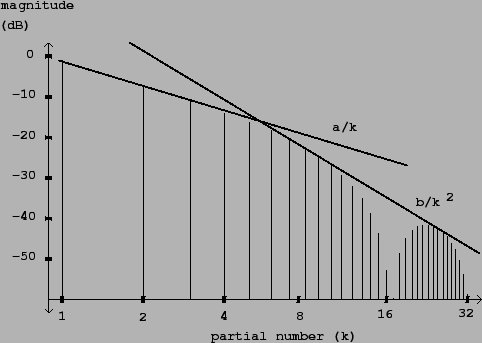As a first line of defense against foldover, we can synthesize the waveform at
a much higher sample rate, apply a low-pass filter whose cutoff frequency is
set to the Nyquist frequency (for the original sample rate), then
downsampling. For example, in the above scenario (44100 sample rate, 440 Hz.
tone) we could generate the sawtooth at a sample rate of
![]() Hz. We would then only care about frequencies in excess of
Hz. We would then only care about frequencies in excess of
![]() Hz. (so that they fold over into audible frequencies;
foldover to ultrasonic frequencies normally won't concern us) so the first
problematic partial is
Hz. (so that they fold over into audible frequencies;
foldover to ultrasonic frequencies normally won't concern us) so the first
problematic partial is
![]() , whose amplitude is -64dB relative
to that of the fundamental.
, whose amplitude is -64dB relative
to that of the fundamental.
 |
As before, this attenuation degrades by 6 dB for every octave the fundamental is raised, so that a 10 kHz. sawtooth only enjoys a 37 dB drop from the fundamental to the loudest foldover partial. On the other hand, raising the sample rate by an additional factor of two reduces foldover by the same amount. If we really wish to get 60 decibels of foldover rejection--all the way up to a 10 kHz. fundamental--we will have to oversample by a factor of 256, to a sample rate of about 11 million Hertz.